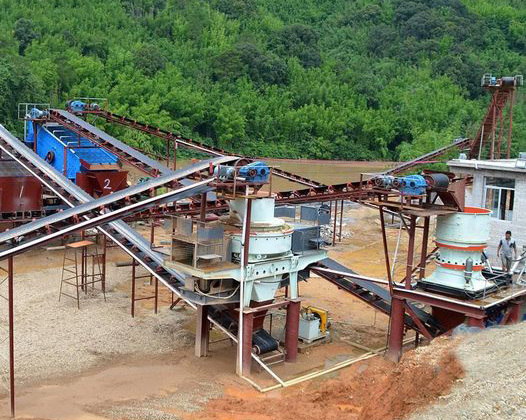A pebble crushing plant is designed to process river pebbles or cobblestones into high-quality sand and aggregates, which are commonly used in construction and infrastructure projects. The configuration of such a plant involves multiple stages of crushing and screening to achieve the desired particle size distribution.

1. Feeding System
The first step in the process is the feeding system, which typically includes a vibrating feeder and a hopper. This is where the raw river pebble materials are delivered into the crushing system. A vibrating feeder ensures a steady and uniform feed to the primary crusher, preventing blockages and optimizing throughput.
- Vibrating Feeder: Ensures smooth material transfer and prevents overloading the crushers.
- Hopper: Holds a sufficient amount of material for continuous operation.
2. Primary Crushing Stage
The primary crusher is responsible for reducing the large-sized pebbles into a more manageable size for the subsequent stages. Typically, a jaw crusher is used as the primary crusher for pebble crushing because of its ability to handle large feed sizes and produce coarse aggregates.
- Jaw Crusher: This type of crusher offers a high crushing ratio, suitable for the reduction of large pebbles. The output from the jaw crusher typically ranges from 100 to 300 mm.
After primary crushing, the materials are further reduced to smaller sizes for secondary crushing.
3. Secondary Crushing Stage
In the secondary crushing stage, the material is fed into a cone crusher or an impact crusher. The choice of secondary crusher depends on the desired final product. For more cubical shapes and high-quality sand production, a cone crusher is preferred because it offers better control over particle size and produces fewer flaky materials.
- Cone Crusher: The secondary cone crusher is ideal for further reducing the size of the crushed pebbles to 30-60 mm or smaller, depending on the crusher’s settings.
- Impact Crusher: If the focus is on high-quality sand, an impact crusher or a vertical shaft impact (VSI) crusher may be used to produce finer particles and improve shape.
4. Tertiary Crushing (if required)
Depending on the required final output and the properties of the pebbles, tertiary crushing may be necessary. If a higher proportion of fine aggregates (sand) is needed, a VSI crusher is a common choice at this stage. The VSI crusher works by throwing the material against a hard surface, leading to further reduction into sand-sized particles.
- Vertical Shaft Impact Crusher (VSI): This type of crusher is highly effective at producing high-quality, well-shaped sand from pebbles and other materials.
5. Screening and Classification
Once the material is crushed to the desired size, it needs to be screened to separate fine and coarse aggregates. This is typically done using a vibrating screen.
- Vibrating Screens: Screens with multiple layers separate different sizes of material. For example, you may have screens to separate material into sand, 0-5mm, and other categories like 5-10mm and 10-20mm.
The coarse aggregates are sent for further processing or stockpiling, while the fine aggregates (sand) are typically washed to remove impurities.
6. Washing and Fine Aggregate Production
For applications that require clean, high-quality sand, a sand washing machine can be used to remove impurities like clay, dust, and fine particles. This stage is crucial for producing high-grade sand for construction and concrete mixing.
- Sand Washer: Cleans the sand by using water and allows it to meet the required standards for quality and fineness.
Summary of Key Equipment:
- Vibrating Feeder: Uniform feeding.
- Jaw Crusher: Primary reduction of pebble size.
- Cone Crusher: Secondary reduction, ideal for coarse aggregate production.
- VSI Crusher: Tertiary crushing for fine aggregates and sand.
- Vibrating Screens: Sorting materials into different sizes.
- Sand Washer: Cleaning fine aggregates.
A pebble crushing plant typically involves a combination of jaw crushers, cone crushers, and possibly VSI crushers, along with vibrating feeders and screens for sorting and classification. Depending on the end product requirements, a washing system may be included to ensure the final product meets the desired quality standards. By using a properly configured crushing plant, operators can efficiently produce high-quality aggregates and sand for various construction projects.
